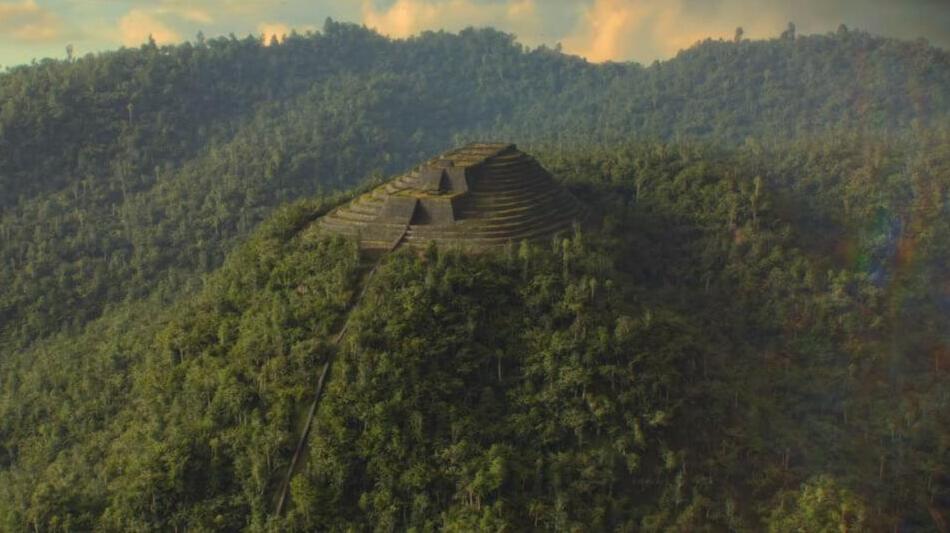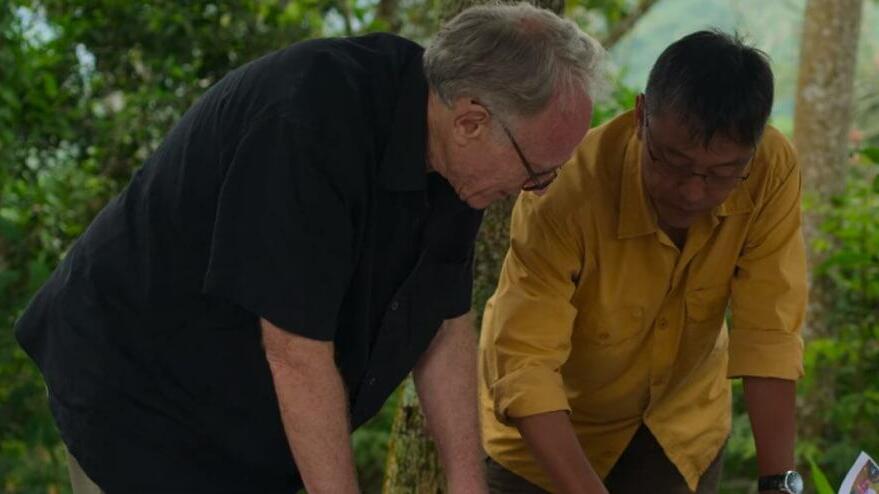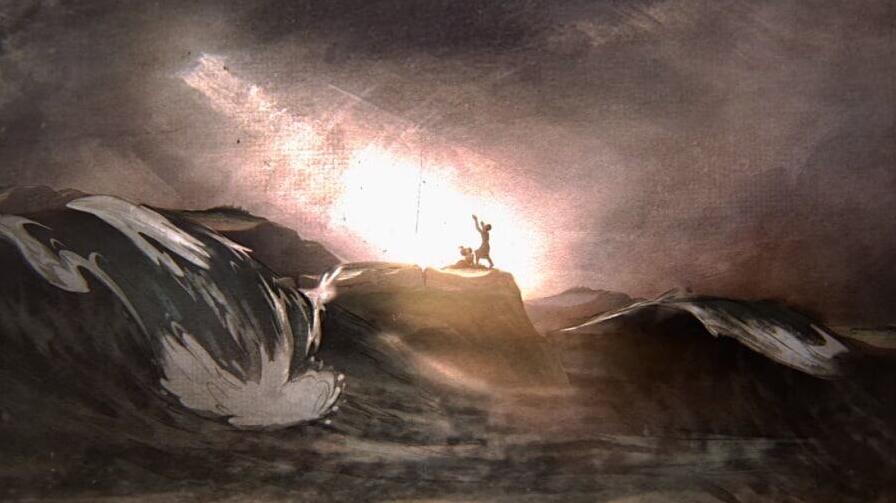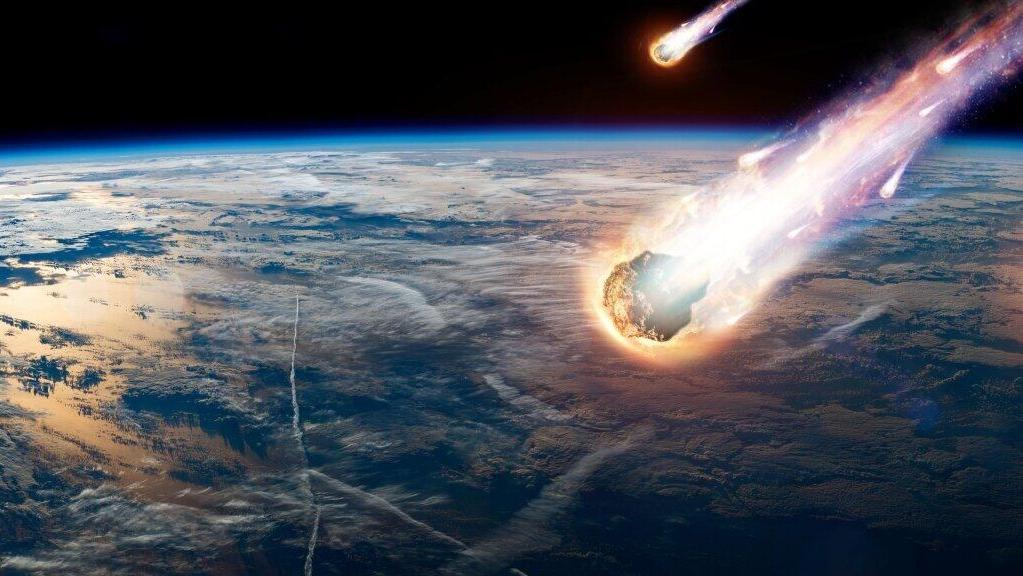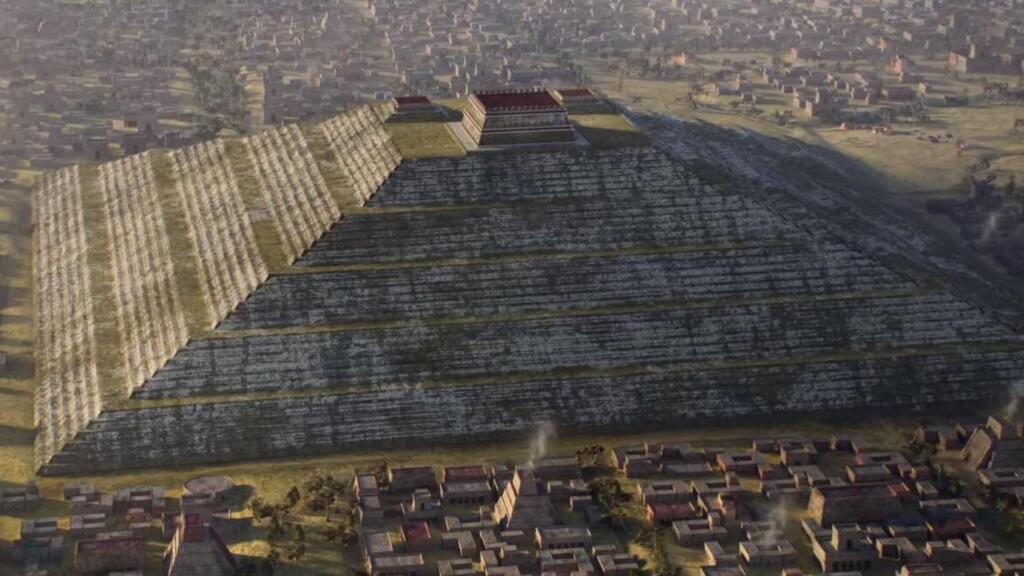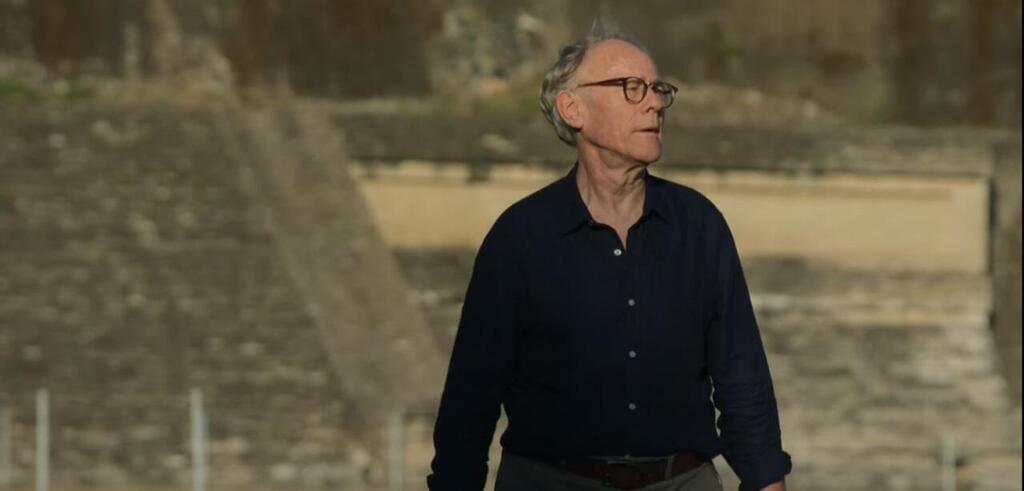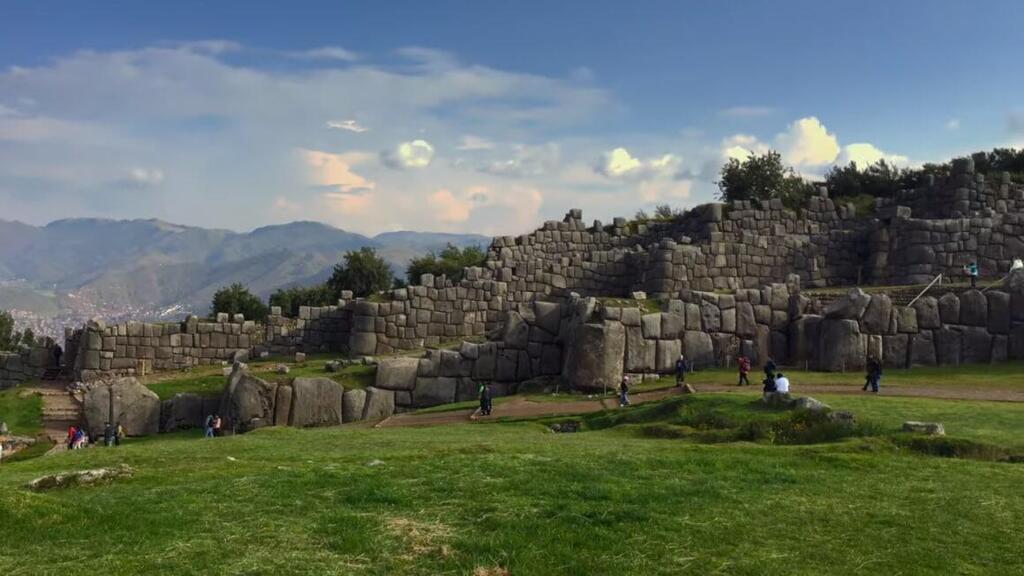Getting your Trinity Audio player ready...
The world of archaeology raged last week as the series, “Ancient Apocalypse”, narrated by journalist Graham Hancock, was released on Netflix’s streaming service.
Hancock has been a known figure in the world of pseudoarchaeology for many years, a kind of Erich von Däniken version 2.0, save for the aliens. But the archaeologists’ main grievance in this case relates to Hancock’s direct attack on archeologists and the entire field of archaeology.
His main claim is that archaeologists are all consciously and intentionally concealing part of a worldwide conspiracy - the truth about humanity’s glorious past. Their aim is to conceal the evidence of the existence of an ancient human civilization already in the last Ice Age, long before humans began to engage in agriculture, just over ten thousand years ago.
Hancock’s approach is already evident in the first three minutes of the opening episode of the series, during which he sets out on a crusade against scientific archaeology and all who work in the field. He is documented calling them “so-called experts”, and claims that they are defensive, arrogant and pretentious, and is convinced that they view him as “their public enemy number one” for daring to speak out against the “historical paradigm”.
This rhetoric, which presents him as a fearless warrior against the corrupt establishment, may lead viewers to think that one of the greatest archaeologists of all time is standing before them. But Hancock himself declares that he doesn’t claim to be an archaeologist or a scientist. According to his definition he is just “a journalist who investigates human prehistory”.
This is practically equivalent to me saying that I am an archaeologist interested in ancient diseases, and in the same breath claiming that none of the epidemiological experts understand anything about public health and are wrong about the COVID-19 pandemic. This is a shaky foundation that completely negates his ability to engage with the subject in a credible way. But he does this, nonetheless.
Hancock is a typical pseudo-archaeologist. He sees no need to present clear and conclusive evidence to back his claims, or alternatively, explains that there is indeed a problem with the evidence but that in any case, he is right.
Hancock’s main claim is that during the last Ice Age, which ended about 12 thousand years ago, our world was ruled by a mysterious, advanced civilization whose grip extended over all the continents on Earth, until it ended in an apocalyptic flood.
The survivors of the flood were those who taught humans of the Stone Age the secrets of agriculture, architecture and all the other advanced technologies necessary for the existence of complex human civilizations.
And then Hancock addresses the question of why nothing at all has been written about this advanced, ancient civilization in history books and textbooks. The reasons he enumerates are almost amusing. One claim is that it disappeared in a flood and left very few traces.
Second, he claims that humans have forgotten about its existence. And then he concludes with the conspiratorial explanation: archaeologists do not study the findings that indicate the existence of this civilization because it threatens their existing theories.
But when we delve deeper we discover that at no stage does Hancock actually present real evidence to prove his claims, but rather a slew of negative evidence. In other words, he repeatedly makes excuses for why there is no real evidence and thus relies on nothing more than a collection of possibilities, hypotheses and untested claims.
Take, for example, “Bimini Road”. In reality it is an underwater rock formation almost one kilometer in length, comprising rectangular limestone rocks. Since its discovery in 1968, during a dive near North Bimini island, in the Bahamas, in the West Atlantic Ocean, many have claimed that it is a man-made structure. Perhaps it is a wall, or a road, or a pier, or maybe even a breakwater.
Quite a few tourism websites even present it as part of the mythical city of Atlantis. But are there any facts or any evidence? None at all.
Behind these claims stands a diverse, colorful list of people, including zoologist Joseph Manson Valentine, linguist Charles Berlitz, psychologist Greg Little, and anthropologist R. Cedric Leonard.
Now Hancock - a journalist - also enters the picture and repeats the unproven claims of his predecessors. In reality, geologists unanimously agree that Bimini Road is a natural rock formation, and ceased studying the site a few years after it was discovered. There is not a single archaeologist who claims that this is a man-made road.
The problem is, of course, the great ease with which people get caught up in romantic explanations of complex phenomena, which take the many question marks that inevitably exist in the study of the past and replace them with large exclamation marks with no basis in reality.
This leads to alluring stories about these large structures being built by, or with the assistance of, aliens, but Heaven forbid, not by the “primitive” local residents, or to legends such as the one about Atlantis.
It is also clear why they are believed: it’s romantic, it sounds like a wonderful Hollywood movie, it’s good entertainment, and we all love entertainment. But the problems begin when entertainment is sold as a “documentary” or as facts.
In the last episode of the series, Hancock and the conspiracy-loving podcast host Randall Carlson, speculate that the cataclysmic flood that, in their opinion, led to the demise of this civilization from the global Ice Age was caused by a comet that collided with Earth and led to the melting of polar ice caps and the subsequent submergence of its remains beneath the ocean waves. But in truth, if a large comet had hit Earth with a great impact, we would expect to find remains of this cataclysmic event.
At the very least, it would have been reasonable to assume the existence of a collision crater, such as the Chicxulub crater near the Yucatán Peninsula in Mexico, which was formed by the impact of the asteroid that, according to the hypothesis, led to the extinction of dinosaurs 67 million years ago.
But the massive impact of this hypothetical comet left no mark on Earth. Why? Hancock and Carlson claim that it landed on an iceberg and melted it. This is, of course, a wonderfully convenient explanation that allows one to claim, in one breath, that the event caused the floods and to explain why no evidence exists of the massive impact.
Even indirect evidence of the global effects of such a cataclysmic event has not been found anywhere. Hancock, naturally, feels no need to prove his claims.
Hancock bases many of his claims on remote sensing devices - such as metal detectors or a ground-penetrating radar. Archaeologists use such devices routinely, relying on them in order to obtain initial information about what they may expect to find beneath the soil surface. But that is all they are - auxiliary tools - and cannot be relied upon as the absolute truth.
When archaeologists use remote sensing devices, they do so only to get a first impression of what to expect when they begin the actual dig, so as to have a better idea of where to concentrate their efforts. But they never jump to unequivocal conclusions based on these devices’ findings.
Metal detectors, for example, will signal in a similar way when detecting a number of Crusader horseshoe nails that sunk into the sand as it would when detecting a hoard of silver coins. Only an excavation will allow us to know what really caused the device to beep.
And Hancock? He presents the findings of these scans as fact, and uses them alone in order to conclude what’s hidden underground; for example, Hancock declares that the Gunung Padang site, found on the island of Java, Indonesia has underground cavities. But this claim has no direct archaeological evidence to back it up.
His entire thesis is based on a signal from an underground sensing device that has limited capabilities and is not necessarily accurate.
Hancock claims that no archaeological excavations have been carried out at the sites he is referring to. This claim is simply false. Save for one, all the sites mentioned in the series, including Gunung Padang in Indonesia, Cholula in Mexico, the Megalithic Temples of Malta, Göbekli Tepe in south-eastern Turkey, Poverty Point in the state of Louisiana, USA and Derinkuyu in Turkey, have been excavated and studied.
Much information exists about these sites and many scientific and popular articles about them have been published. The only site that has not been excavated is Bimini Road, which is located, as mentioned, on the seabed. None of the findings discovered at any of these sites indicate that humans had already settled them during the Ice Age, and the first settlements in all of them date to thousands of years later.
But Hancock tries his best to convince, and in the absence of evidence he resorts to circular arguments. He says that if an advanced civilization existed during the Ice Age, then a certain structure would have existed during the Ice Age; and if this structure is from the Ice Age then it goes without saying that there was an advanced civilization during the Ice Age. Proof? Evidence? Why? What is it good for?
The fact is that today we have a lot of information about the Ice Age, owing to many years of excavations and research studies that were conducted at sites all over the world. All of this amount of information is available on the internet.
It’s remarkable that these hunter-gatherer civilizations, whose technology, according to Hancock, was significantly inferior to that of the advanced Ice Age civilization that he describes, have left an incredible abundance of physical remains that have been found at organized scientific archaeological excavations.
These findings include stone tools, figurines, bones, signs that indicate the existence of family structures and migration journeys, remains of meals, human and animal skeletons, seeds and footprints. In other words, a real civilization leaves traces.
So where did the traces of Hancock’s advanced civilization disappear? The only answer Hancock has to offer is the “flood” that washed away all remains and traces of this forgotten, lost civilization.
Moreover, in contrast to Hancock’s repeated claims about the hunter-gatherers, they had complex technology, including multi-purpose tools from bone or stone, multi-part hunting traps and much more. Modern day archaeologists definitely do not refer to them as simple, “primitive” people.
Hancock speaks out openly against scientists and almost completely rejects the archaeologists’ legitimacy, claiming that for some reason they miss the important findings.
Reality is of course very different. If Hancock had bothered to examine in depth the plethora of archaeological publications and reports on excavations conducted at the sites on which he bases heaps of hypotheses, he would have discovered that all his claims are simply irrelevant.
The big problem with Hancock’s series is that it is presented as a so-called science documentary series. This form of presentation is utterly baseless and in no way can we rely on the information it provides about past civilizations. It is not based on scientific work, but rather on ideas and thoughts. Although it may be entertaining, it is not science.




